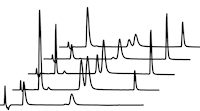
Professor Johanita Kruger, Ph.D.
My research
My research is focused on identifying inhibitors and enhancers of nutrient / bioactive bioavailability and determining the mechanisms of bioavailability modulation.
Main research projects
Identification of the unknown absorption mechanisms of polysorbate 80 micelles
This project, funded by the German Research Foundation (DFG), aims to identify the mechanisms of absorption ofpolysorbate micelles. Curcumin is used as model compound and therefore the absorption mechanisms of curcumin from polysorbate-encapsulated curcumin micellesand in native form will be investigated. Emulsifiers, such as polysorbate, are used to create micellar formulations of drugs, micronutrients and phytochemicals with enhanced oral bioavailability. There is a general lack of knowledge as to the absorption mechanisms of polysorbate micelles. The project will determine how in vitro digestion alters micellar characteristics and Caco-2 trans-epithelial transport of the micelles. The role of specific membrane transporters in the trans-epithelial transport of the micelles and native curcumin will be investigated using CRISPR/cas9 technology. The inter-disciplinary project includes collaborations with Prof. Jan Frank (host laboratory), Dr. Emmanuelle Reboul (Aix Marseille Université, France), and Dr. Stane Pajk (University of Ljubljana, Solvenia). The outputs will provide novel insights into the molecular mechanisms governing the enhanced absorption of micellar formulations of bioactive compounds in general, and of micellar and native curcumin in particular. It may aid in the development of novel micellar formulations with further improved bioavailability and in better understanding and addressing potential safety concerns.
Food processing lab
The USAID Feed the Future Innovation Lab for Food Processing and Post-Harvest Handling (FPL) is an international collaboration between the USA, South Africa, Senegal and Kenya with the goal to increase access to safe and nutritious foods along the value chain by: 1) improving the drying and storage capacity of smallholder farmers, and 2) expanding market opportunities through diversified products to address quality and nutrition needs. My role together with the University of Pretoria, is investigating the effect of various grain/legume drying, food processing and product diversification strategies on mineral bioavailability.
Developing a definition for the novel food-based strategy “food-to-food fortification”
A possible positive development in the fight against malnutrition, especially micronutrient deficiencies, is an emerging strategy: food-to-food fortification, where micronutrient-dense foods are added to food products to increase the micronutrient quality. Despite numerous publications where the term food-to-food fortification has been used, as well as the recent implementation of the concept by the Kenyan government (The Flour Blending Initiative for Food Security, Nutrition & Employment 2018), there is no clear definition of the term, evaluation of the efficiency of the approach has not been reviewed, nor is there information available to guide the use/implementation of the strategy. Therefore, the critical questions to be asked are: what is food-to-food fortification? Is food-to-food fortification really a novel strategy or would it fall under another food-based strategy? Is there any evidence that food-to-food fortification is effective? Together with researchers from the FPL project, we will propose a working definition for further discussion within the scientific community.
Iron and zinc bioavailability from African green leafy vegetables
I have an ongoing collaboration with Prof. Marius Smuts (Centre of excellence for Nutrition, North-West University, South Africa) and Dr. Mieke Faber (South African Medical Research Council, South Africa) on investigating the iron and zinc bioavailability from green leafy vegetables. The research is focused on evaluatinggreen leafy vegetablesas they are consumed, so evaluating the effect of processing, preservation and consumption with cereal based meals.
Education and professional experience
Aug 2023 - present: Professor of Food Technology / Nutrition, University of Applied Sciences Fulda, Germany
Jan 2020 – 2023: Researcher (DFG position), University of Hohenheim, Stuttgart
Jun 2016 – Aug 2018: Post-doctoral Fellow, University of Hohenheim, Stuttgart
Sep 2015 – Sep 2017: Lecturer, Food Science Department, University of Pretoria, Pretoria, South Africa
Jan 2015 – Aug 2015: Researcher, Institute of Food, Nutrition and Well-being, University of Pretoria, Pretoria, South Africa
Nov 2013 – Oct 2014: Post-Doctoral Fellow, Institute of Food, Nutrition and Well-being, University of Pretoria, Pretoria, South Africa
Nov 2012 – Oct 2013: Part time lecturer, Food Science Department, University of Pretoria, Pretoria, South Africa
Jun 2012 – May 2013: Part-time researcher, South African Grain Laboratories (SAGL), Pretoria, South Africa
Jun 2011 – May 2012: Part time laboratory intern, South African Grain Laboratories (SAGL), Pretoria, South Africa
Dec 2009 – Apr 2013: PhD Nutrition with thesis title ‚Improved iron and zinc availability in sorghum by phytate reduction through genetic modification, fermentation and phytate addition’
Jan 2009 – Nov 2009: Master student in Nutrition and Food Sciences Sciences. Master's research project is upgraded to a PhD project
Jan 2005 – Dec 2008: BSc Bachelor (3 years) and Honours (1 year) in Nutrition and Food Science. Food Science Department, University of Pretoria, Pretoria, South Africa.
Dec 2003: Graduate with distinction from High school Waterkloof with full University acceptance.
Publications
Original articles
26. Kruger, J. & Frank, J. (2024) First in vitro insights into the digestive stability of polysorbate 80 micelles. J Food Bioactives (published online).
25. Kasapoğlu, K.N., Demircan, E., Gültekin-Özgüven, M.,Kruger, J.,Frank, J., Arslaner, A. & Özçelik, B. (2022)Recovery of polyphenols using Pressurized Hot Water Extraction (PHWE)from black rosehip followed by encapsulation for increased bioaccessibilityand antioxidant activity. Molecules 27: 6807, IF 4.927.
24. Adetola, O. Y., Kruger, J., Ferruzzi, M. G., Hamaker, B. R., & Taylor, J. R. (2021). Potential of moringa leaf and baobab fruit food-to-food fortification of wholegrain maize porridge to improve iron and zinc bioaccessibility. Int J Food Sci Nutr, 1-13.
23. Kruger, J. (2020). Potential of food‐to‐food fortification with cowpea leaves and orange‐fleshed sweet potato, in combination with conventional fortification, to improve the cellular uptake of iron and zinc from ready‐to‐eat maize porridges. Food Science & Nutrition, 8, 3190-3199.
22. Omar, N. A., Frank, J., Kruger, J., Dal Bello, F., Medana, C., Collino, M., Zamaratskaia, G., Michaelsson, K., Wolk, A. & Landberg, R. (2021) Effects of high intakes of fructose and galactose, with or without added fructooligosaccharides, on metabolic factors, inflammation, and gut integrity in a rat model. Mol Nutr Food Res 2001133, IF 5.31.
21. Kruger, J., Sus, N. & Frank, J.(2020) Ascorbic acid, sucrose and olive oil lipids mitigate the inhibitory effects of pectin on the bioaccessibility and Caco-2 cellular uptake of ferulic acid and naringenin. Food & Function 11: 4138-4145, IF 5.396.
20. Krishnamoorthy, S., Coetzee, V., Kruger, J., Potgieter, H., & Buys, E. M. (2020). Dysbiosis Signatures of Fecal Microbiota in South African Infants with Respiratory, Gastrointestinal, and Other Diseases. The Journal of Pediatrics.
19. Gwamba, J., Kruger, J., & Taylor, J. R. (2019) Influence of grain quality characteristics and basic processing technologies on the mineral and antinutrient contents of iron and zinc biofortified open‐pollinated variety and hybrid‐type pearl millet. International Journal of Food Science & Technology.
18. Debelo, H., Ndiaye, C., Kruger, J., Hamaker, B. R., & Ferruzzi, M. G. (2019). African Adansonia digitata fruit pulp (baobab) modifies provitamin A carotenoid bioaccessibility from composite pearl millet porridges. Journal of Food Science and Technology (published online).
17. Kruger, J., Stuetz, W. & Frank, J. (2019) Iron, catechin and ferulic acid inhibit β-carotene absorption in Caco-2 cells by reducing micellization. J Agric Food Chem 67: 5792-5800, IF 3.571.
16. Oluyimika, Y. A., Kruger, J., White, Z., & Taylor, J. R. (2019). Comparison between food-to-food fortification of pearl millet porridge with moringa leaves and baobab fruit and with adding ascorbic and citric acid on iron, zinc and other mineral bioaccessibility. LWT, 106, 92-97.
15. van der Merwe, R., Kruger, J., Ferruzzi, M. G., Duodu, K. G., & Taylor, J. R. (2019). Improving iron and zinc bioaccessibility through food-to-food fortification of pearl millet with tropical plant foodstuffs (moringa leaf powder, roselle calyces and baobab fruit pulp). Journal of Food science and Technology, 56(4), 2244-2256.
14. Adeyanju, A. A., Kruger, J., Taylor, J. R., & Duodu, K. G. (2019). Effects of different souring methods on the protein quality and iron and zinc bioaccessibilities of non‐alcoholic beverages from sorghum and amaranth. International journal of food science & technology, 54(3), 798-809.
13. Kruger, J., Breynaert, A., Pieters, L., & Hermans, N. (2018). Vegetable relishes, high in β-carotene, increase the iron, zinc and β-carotene nutritive values from cereal porridges. International journal of food sciences and nutrition, 69(3), 291-297.
12. Ndimba, R. J., Kruger, J., Mehlo, L., Barnabas, A., Kossmann, J., & Ndimba, B. K. 2017. A Comparative Study of Selected Physical and Biochemical Traits of Wild-Type and Transgenic Sorghum to Reveal Differences Relevant to Grain Quality. Frontiers in Plant Science, 8, 952.
11. Vilakati, N., Taylor, J. R., MacIntyre, U., & Kruger, J. 2016. Effects of processing and addition of a cowpea leaf relish on the iron and zinc nutritive value of a ready-to-eat sorghum-cowpea porridge aimed at young children. LWT-Food Science and Technology, 73, 467-472.
10. Kruger, J. 2016. Replacing electrolytic iron in a fortification-mix with NaFeEDTA increases both iron and zinc availabilities in traditional African maize porridges. Food Chemistry, 205, 9-13.
9. Minnis-Ndimba, R., Kruger, J., Taylor, J. R. N., Mtshali, C., & Pineda-Vargas, C. A. 2015. Micro-PIXE mapping of mineral distribution in mature grain of two pearl millet cultivars. Nuclear Instruments and Methods in Physics Research Section B: Beam Interactions with Materials and Atoms, 363, 177-182.
8. Kruger, J., Mongwaketse, T., Faber, M., van der Hoeven, M., Smuts, C.M. 2015. Potential contribution of African green leafy vegetables and maize porridge composite meals to iron and zinc nutrition, Nutrition, 31(9), 1117-1123.
7. Kruger, J., Minnis-Ndimba, R., Mtshali, C., Minnaar, A. 2015. Novel in situ evaluation of the role minerals play in the development of the hard-to-cook (HTC) defect of cowpeas and its effect on the in vitro mineral bioaccessibility. Food Chemistry, 174, 365-371.
6. Salvador, E.M., Kruger, J., McCrindle, C.M.E., McCrindle, B., Steenkamp, V. 2015. In Vitro Bioaccessibility of Ferrous Sulfate and Ferrous Fumarate from Fortified Cassava Mahewu. Journal of Food and Nutrition Sciences, 3(5), 180-186.
5. Kruger, J., Pineda-Vargas, C., Minnis-Ndimba, R., Taylor, J. 2014. Visualisation of the distribution of minerals in red non-tannin finger millet using PIXE microanalysis. Journal of Cereal Science, 60, 1-3.
4. Kruger, J., Oelofse, A., Taylor, JRN. 2014. Effects of aqueous soaking on the phytate and mineral contents and ratios of whole grain normal sorghum and maize and low phytate sorghum. International Journal of Food Sciences and Nutrition, 0, 1-8.
3. Kruger, J., Taylor, J.R.N., Du, X., De Moura, F.F., Lönnerdal, B., Oelofse, A. 2013 Effect of phytate reduction of sorghum, through genetic modification, on iron and zinc availability as assessed by an in vitro dialysability bioaccessibility assay, Caco-2 cell uptake assay, and suckling rat pup absorption model. Food Chemistry, 141, 1019-1025.
2. Kruger, J., Taylor, J.R.N., Oelofse, A. 2012. Effects of reducing phytate content in sorghum through genetic modification and fermentation on in vitro iron availability in wholegrain porridges. Food Chemistry, 131, 220-224.
1. Kruger, J., Taylor, J., Taylor, JRN. 2012. Potential for improvement in yeast nutrition in raw whole grain sorghum and maize later brewing and bioethanol production through grain genetic modification and phytase treatment. Journal of the Institute of Brewing, 118, 70-75.
Review articles
4. Kruger, J., Taylor, J. R., Ferruzzi, M. G., & Debelo, H. (2020). What is food‐to‐food fortification? A working definition and framework for evaluation of efficiency and implementation of best practices. Comprehensive Reviews in Food Science and Food Safety, 19, 3618-3658.
3. Ferruzzi, M. G., Kruger, J., Mohamedshah, Z., Debelo, H., & Taylor, J. R. (2020). Insights from in vitro exploration of factors influencing iron, zinc and provitamin A carotenoid bioaccessibility and intestinal absorption from cereals. Journal of Cereal Science, 103126.
2. Taylor, J.R.N., Emmambux, E., Kruger, J. 2015. Developments in modulating glycaemic response in starchy cereal foods. Starch, 67, 79-89.
1. Taylor, J.R.N., Dlamini, D.C., Kruger, J. 2013. 125th Anniversary Review: The science of the tropical cereals, sorghum, maize and rice in relation to lager beer brewing. Journal of the Institute of Brewing, 119, 1-14.
Home | Staff | Publications | Laboratory |Grants| Curcumin| For students | Jobs | Contact | Privacy Policy





